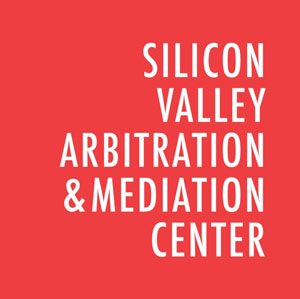“The best thing a woman can do is to be super competent, persevere and have thick skin,” said Louise Barrington, the founder of ArbitralWomen, the international network of women in dispute resolution.(1) I believe this statement holds true in all facets of life, but specifically professionally.
Traditionally the field of international arbitration has been a field primarily dominated by men, however in recent years many women have made astounding steps to tighten this gap. While arbitration in America continues to be an important area to evaluate, this post focuses on international disputes, particularly as they relate to the technology sector.
There are many justifications for the dominance of men in the field of international arbitration. Historically, there is a lot of data that supports the gap between men and women. According to Barrington’s article, “Then and Now- A Quarter Century of Women in International Arbitration”, in the late 1980’s at an arbitration conference in Bahrain only approximately 6/250 people in attendance were women. This was the initial conference that sparked Barrington’s interest in the role of women in international arbitration. Many steps have been made since this conference in Bahrain however a 2004 study found only two instances of women sitting on panels of international arbitration groups. A 2009 study found that only 4% of international arbitrators were women. Over 60% of women state that they find their gender to be a barrier to success, and 75% of men said they would rather work for a man than a woman. These statistics are not anything new, however the disparities are disconcerting from an egalitarian standpoint.(2)
Historically, men and women have very large gaps in both professional wages and opportunities, and while as previously mentioned there is still progress needed, women have still come a long way. In September 2011 at a Latin American arbitration conference 40% of the arbitrators in attendance were women. From 2009 to 2012, the number of women in CIArb (Chartered Institute of Arbitrators) doubled from 50 to 100. These are amazing steps towards equality in a male-dominated field. Louise Barrington agrees that the progress that has been made is important, but says, ““Our work is not complete. Until those percentages rise to around 50%, women will need to work hard and work smart to gain and retain the progress we’ve made… But looking back to 1985, it’s comforting to know that the door is now very much open to talented, persistent women who insist on taking their place in the world of international arbitration.”(3)
The future of women in arbitration looks bright as the statistics keep increasing to tighten the inequalities. There are many actions that have been taken, and that can be taken in the future in order to further the role of women in international arbitration. Many have considered introducing a quota system for women arbitrator appointments to committees and panels. Others have suggested that all ADR training must require a section on taking gender into consideration. Most common is the suggestion to take on a program of positive action, which means ensuring equal numbers of men and women serve on influential committees within institutions, without needing a quota system to do this. Louise Barrington, “believes optimistically that the more women that enter the legal profession; the more likely they are to be more and more visible in the field of arbitration”.
Women in America have come an extremely long way from gaining the right to vote in the early 1900’s, however there are still many economic, social, and political disparities across the board that need to be addressed. International arbitration is one example of many of the barriers women face in the workplace. That being said, women have been progressing professionally on a massive scale. Advancements of all kinds have been made in all fields, and the legal field is no exception.
As a young woman entering the professional field, I personally am grateful for the positive action taken to assist the progression of professional women. I hope to follow in the courageous footsteps of women before me to fulfill their dreams of an equal professional field.
One of the objectives of SVAMC is to promote diversity in all ways possible, specifically as a non-profit that works in too diversity-lacking fields: technology and arbitration. Promoting the role of women in arbitration can be a small step to eventual equality for women in all professional fields.(4)
Brittany Kirwan (University of Michigan) – SVAMC Summer Intern
Notes
(1) Barrington, Louise. “Then and Now: A Quarter Century of Women in Arbitration.” New York Dispute Resolution Lawyer 5 Jan. 2012. Web.
http://www.aculextransnational.com/pdf/LB_2012_05_Then_and_Now_Quarter_Century_of_Women_in_Arbitration.pdf
(2) Evans, Jill. “Redressing the Balance.” Resolver 5 Jan. 2012. Print.
http://www.arbitralwomen.com/files/publication/15062117172119.pdf
(3) Arbitration Review, Global. “Network Effects.” Global Arbitration Review 14 Oct. 2007: 9-25. Print.
http://www.arbitralwomen.com/files/publication/4311002040430.pdf
(4) Barrington, Louise. “Then and Now: A Quarter Century of Women in Arbitration.” New York Dispute Resolution Lawyer 5 Jan. 2012. Web.
http://www.aculextransnational.com/pdf/LB_2012_05_Then_and_Now_Quarter_Century_of_Women_in_Arbitration.pdf
